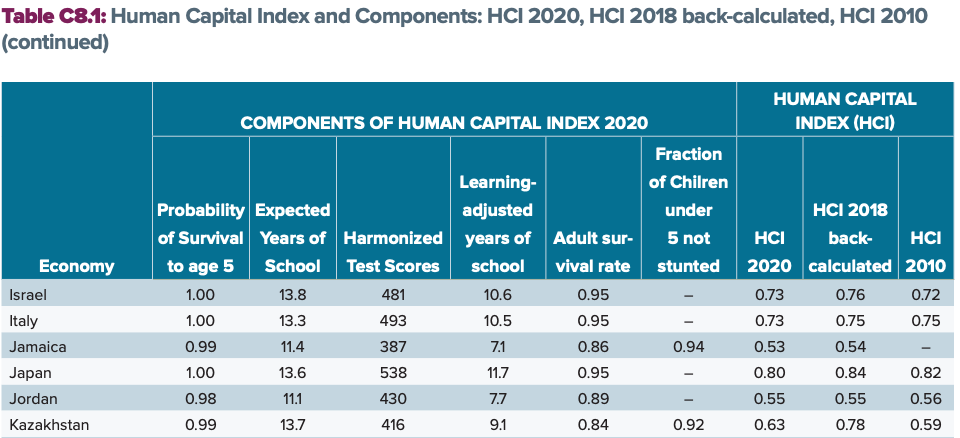NUR-SULTAN – World Bank called for greater investment in human capital development, as it recently presented an update to its Human Capital Index. In the updated report, Kazakhstan is performing relatively well, said World Bank’s Country Manager for Kazakhstan Jean-Francois Marteau.

The HCI is an international metric launched in 2018 as part of the Human Capital Project (HCP) that assesses key components of human capital – health and education – across 174 countries. It measures the amount of human capital that a child born today can expect to attain by 18th birthday underscoring the importance of governments and people to invest in human capital development.
“A healthy, well-educated and skilled person has the opportunity to reach their full potential and thus contribute to the prosperity and development of society,” said Jean-François Marteau. “Going forward, Kazakhstan needs to continue to invest in human capital to maintain the pace of change even in challenging macroeconomic conditions and in light of public health threats amid the COVID-19 pandemic.”
The report said before the outbreak, many countries have made important progress in improving human capital, slightly faster in low-income countries. Despite this progress, globally, a child born in 2020 can expect to be 56 percent as productive.
During the online meeting that discussed the updated report, Zarema Shaukenova, head of the Kazakh Institute for Strategic Studies under the President of Kazakhstan, said the nation pays significant attention to human capital development.
“The head of state always pays special attention to the development of human capital stressing that human capital is the main source of success for any state. This index allows us to quantify the contribution of health and education to the productivity and income levels of the next generation of Kazakhs. The data can also contribute to the government decisions in post pandemic recovery,” she said.
A child born in Kazakhstan today will be 63 percent as productive when growing up, which is lower than the average for Europe and the Central Asian region but higher than the average for upper middle income countries. Between 2010 and 2020, the HCI value for Kazakhstan increased from 0.59 to 0.63.
The quality of education, however, requires further efforts. The indicator for 2020 reflects an increase of four points compared to 2010, largely due to improved adult survival rate of 84 percent from 76 percent and a decrease in stunting rate among children under five years old – 92 percent of children have no stunting.
Children from low income households, however, still lag behind. A child born to 20 percent of the richest families could expect to attain 64 percent of potential productivity, while a child born to 20 percent of the poorest families could expect to reach 53 percent of the potential.


